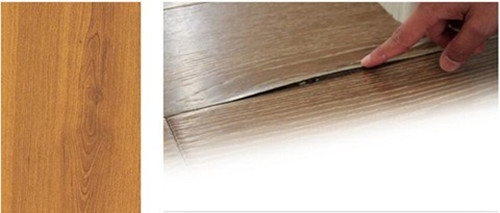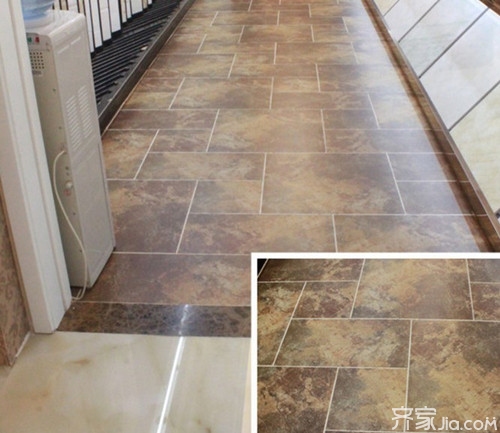Tiles occupy a certain position in the decoration, but after the renovation, the tiles may sometimes be deformed and damaged due to various reasons, which will affect the safety and beauty of the house. Therefore, many people who do not understand the reasons will feel very puzzled. The tiles that were soon to be plastered will be deformed. Today, Xiao Bian will give you an explanation of the reasons for the deformation of tiles, as well as common deformation types of tiles and preventive measures.

In general, there are more tiles deformation phenomenon is tile tiles or arched bathroom tile, this is because the bathroom tile is composed of moisture , bathroom tile moisture causes are generally the following :
1. Moisture in the air (eg Huang Meitian);
2. The floor was not dried and the keel was reinforced with cement;
3. Keel, wool bathroom tile is too wet, the use of water-based glue;
4. The first floor and other wet environments are not treated as moisture-proof;
5. The cross section of the stone floor and the bathroom tile is not closed;
6. Blisters (such as water pipe splitting, balcony water intrusion, etc.);
7. In addition, the product itself and improper construction may also constitute arching. For example, improper monotonous disposal, lack of intake, low moisture content, shallow backs, insufficient elastic gaps in construction, and too tight laying. As the saying goes, tiles are "three-point quality seven-pavement." More often than not, the overall effect of the tile is not the quality of the product itself, but whether it is properly paved.
Seven types of deformation of tiles and preventive measures
1. Angle adjustment
The four corners are upturned, and the length is about 30mm. The rest of the surface is flat or slightly concave. This defect is caused by excessive temperature difference between the upper and lower roller planes during the later stage of firing, and the defects mostly occur in the final 2-5min of firing.
Solution:
A. If the size of the kiln product is correct, reduce the temperature of the upper 2-3 groups (boxes) of the firing belt by L5-10°C or more, and raise the temperature below the roller table;
B If the size is too large after firing, only increase the temperature below the roller table 5-10;
C. If the product size is too small after firing, only lower the temperature above the roller table by 5-10°C or more.
2. Corner bend
The corner bend is just opposite to the warping angle defect. It is the corner of the blank that is bent down at a length of about 30mm. The rest of the surface is flat or only slightly convex. This defect occurs in the middle or both sides of the kiln. It is due to The temperature difference between the upper and lower roller planes at the end of the firing was too large.
Solution:
A. If the kiln product is the correct size, lower the temperature of the lower 2-3 group (box) roller bar (5-10°C or higher) and raise the temperature above the roller table.
B. If the size after firing is too large, only increase the temperature above the roller table by 5-10 °C or more.
C. If the size after firing is too small, only lower the temperature below the roller table by 5-10°C or more.
Sometimes, there is only a corner-down phenomenon close to the kiln wall. This may be due to the low temperature of the firing zone on the side (or the roller bar), which can reduce the combustion pressure on that side. , At the same time, check whether the bottom of the kiln is piled with more rotten bricks, resulting in excessive heat storage, deviation of the kiln temperature, and checking whether there is air leakage at the roller bar hole of the side. In actual operation, the lower pumping force of the roller table is reduced, and the upper layer pumping force is increased, and good results can also be obtained.
3. Upside
The blanks are bent upward along both sides parallel to the kiln direction, and the deformation on the two sides perpendicular to the kiln is not obvious. The reason is that the blanks are burned in the early stage (850-900°C or 50-100°C lower than the maximum firing temperature). The temperature difference between the roads is unreasonable.
Solution:
Increase the temperature above the roller table in this area by 5-10°C or more. At the same time, lower the temperature below the roller table so that it is slightly concave, but it must not be convex, so that the blank is softened at high temperatures and protrudes. The balance is maintained and the body is straightened by gravity.

4. Concave
The edge of the blank descends downwards and concaves. The concave surface may be caused by the unreasonable temperature difference between the upper and lower strips of the pre-tropical roller, or it may be caused by the unreasonable temperature difference between the upper and lower strips of the burning belt.
Solution:
1. Pre-tropical production of deformed blanks
A. Adjust the formula of the blank to reduce the ignition loss of the blank.
B. properly reduce the ball fineness of the body
C. Improve the forming pressure, reduce the moisture content of the powder, thereby increasing the density of the green body, controlling the particle size of the powder and improving the uniformity of the filler;
D. According to the deformation of the blank, adjust the temperature difference between the upper and lower strips of the pre-tropical roller. When the blank is concave, increase the temperature above the roller or lower the temperature below the roller. If the blank is convex, the method is reversed.
E. Reduce the temperature gradient, adjust the firing curve or reduce the roll bar speed, and extend the entire firing cycle.
2. The body deformed in the firing zone
A. If the output dimension of the kiln is correct, lower the temperature above the roller table by 5-10°C or more, and raise the temperature below the roller table:
B. If the kiln product size is too large, only increase the temperature below the roller table 5-10 °C or more.
C. If the size of the kiln product is too small, only lower the temperature above the roller table by 5-10°C or more.
5. Distortion
The green body deformed on both sides parallel to the kiln axis, and it was produced at a distance of 70-80 mm from the edge and then bent down 30 mm from the edge.
Cause:
A. It may be the beginning of the firing of the green body. Due to the higher temperature below the roller table, the tiles are convexly deformed, so that both sides of the tile become the supporting edges of the tile, and the middle part is almost vacant. When reaching the high temperature area, the bottom of the tile is softened. The left and right sides of the blank cannot withstand the effects of gravity and the effect of the roller rod on it, and the support is also transferred along with the deformation of the tile. When the two sides of the tile are tilted to a certain degree, they are subjected to gravity. Start to bend, so as to become twisted. Solution: First deal with the corner bend defect until the blank body is turned upwards, then press the upturn edge defect to resolve.
B. It may be the expansion of corner bend defects, which often occurs within the last 5-10 mm of the firing zone. This is usually resolved by the corner bend defect treatment method.
C. It may be that when the quenching or quenching is started, the blanks are pressed against each other during advancement, and this can be overcome by adjusting the speed of the speed-regulating motor and the spacing of the tiles.
6. "Seagull wing" deformation
The cause of deformation of the "sea gull wing" may be in the middle or in the end of the firing zone. Since the temperature in the upper part of the roller table is too high, the tiles become concave. At this time, the middle part of the tile becomes the priority support area on the roller bar. Due to the gravity and the stress generated in the brick drive, the middle of the brick gradually convex upward until the end of the firing zone, forming a "sea gull wing" deformation.
Solution:
To solve this deformation, must avoid convex deformation due to mechanical reasons or high temperature, and then properly increase the temperature under the roller, set the appropriate temperature difference in the middle and end of the burning zone, about 25-30 °C If necessary, the temperature difference can also be set at the front end of the firing belt.
7. Irregular deformation
Occur in different locations in the kiln, sometimes in a specific location, and become the same defect form, but the observation is still not regular for a long time.
Causes: Due to stick sticks, roller bars bent or deformed, or roller bars not on the same horizontal line, the transmission is unbalanced, and the blanks have been recessed or convexly deformed before entering the kiln, and then tile extrusion occurs.
Solution:
1. Regularly grind the roller bar, coat the roller bar with an alumina protective layer, and coat the back of the porcelain tile with a layer of alumina slurry (or high aluminum powder) so as to prevent liquid phase in the production of the base at a high temperature. Bonding with the roller rod also makes the base relatively rigid and the upper part relatively soft, which reduces the distortion of the couple, reduces the degree of deformation, adjusts the firing curve, and avoids early deformation.
2. When the kiln is out of shape, check whether the gas pressure in each group of burners is normal or significantly different.
Xiao Bian concludes: The reasons for the deformation of the tiles and the types and prevention measures of the common tiles are introduced here. We hope to help everyone. If you want to know more related information, you can pay attention to this website information.
Tile Thin Plaster Tile Edge Tile Selection Matters Decorative Tile Tile Cross Price
Emergency, LED driver,Emergency Power
Fuonce Lighting , https://www.fuonce.com